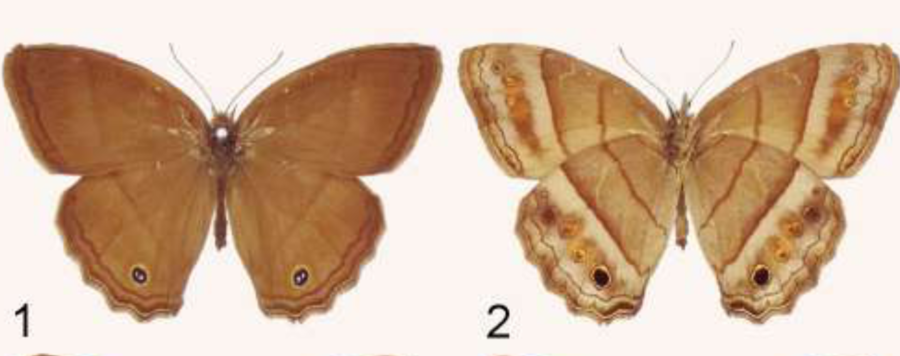
Vareuptychia and Vanima systematics
Vareuptychia Forster, 1964 stat. rest. is revalidated and comprises two species, V. similis (Butler, 1867) comb. rest. and V. themis (Butler, 1867) comb. nov. Vanima Zacca, Casagrande & Mielke gen. nov. is described to contain Euptychia labe Butler, 1870 (the type species), E. palladia Butler, 1867 and E. lesbia Staudinger, [1886]. The taxonomy of these two genera was initially revised based on morphological and distributional data, and subsequently tested and supported with a Maximum Likelihood analysis using four genes (COI, GAPDH, RpS5 and EF1-a). Lectotypes are designated for Euptychia similis Butler, 1867, E. themis Butler, 1867, E. undina Butler, 1870 and E. lesbia Staudinger, [1886]. No DNA sequences were obtained for Euptychia cleophes Godman & Salvin, 1889 but its transfer to Megisto Hübner, [1819] is supported by morphological evidence. For all taxa treated in this study, a taxonomic catalog, diagnosis, (re)description and illustrations of adults, venation and genitalia are provided, as well as comments on intraspecific variation, sexual dichromatism, ecology and distribution maps.





